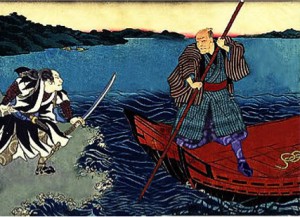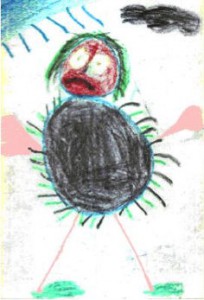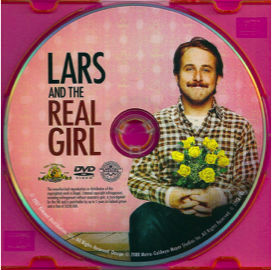Resources
 1. Partners for Change Outcome Management Systems (PCOMS) utilises the Outcome Rating Scale and Session Rating Scale (ORS/SRS) suite of tools. Results to date show that these tools can more than double the effectiveness of some clinicians and halve the drop out rates. Barry Duncan and Scott Miller, who developed these tools, later went their separate ways, and each have a website where these tools can be obtained from. Scott now uses the acronym FIT (Feedback Informed Therapy), which is more agnostic, in that it is not tied to any particular suite of tools. Duncan’s Heart & Soul of Change project website is, I believe, the simplest access to downloading the tools. They are free for individual use, but there is a fee for agencies
1. Partners for Change Outcome Management Systems (PCOMS) utilises the Outcome Rating Scale and Session Rating Scale (ORS/SRS) suite of tools. Results to date show that these tools can more than double the effectiveness of some clinicians and halve the drop out rates. Barry Duncan and Scott Miller, who developed these tools, later went their separate ways, and each have a website where these tools can be obtained from. Scott now uses the acronym FIT (Feedback Informed Therapy), which is more agnostic, in that it is not tied to any particular suite of tools. Duncan’s Heart & Soul of Change project website is, I believe, the simplest access to downloading the tools. They are free for individual use, but there is a fee for agencies  and other multiple users. Barry also has the Te Reo version, which is absent from Scott’s site. However Scott’s site provides a list and links to a number of web-based software programmes that can generate progress charts, and allow you to see how your effectiveness compares to other practitioners. You don’t need these as you can simply develop your own charts using a simple Excel spreadsheet; but you wont be able to compare yourself with other practitioners so readily. There are also a number of other programmes not listed on Scott’s site that can be found with a google search – including the NZ based ‘Exess’ case management software.
and other multiple users. Barry also has the Te Reo version, which is absent from Scott’s site. However Scott’s site provides a list and links to a number of web-based software programmes that can generate progress charts, and allow you to see how your effectiveness compares to other practitioners. You don’t need these as you can simply develop your own charts using a simple Excel spreadsheet; but you wont be able to compare yourself with other practitioners so readily. There are also a number of other programmes not listed on Scott’s site that can be found with a google search – including the NZ based ‘Exess’ case management software.
I highly recommend utilising PCOMS and preferably in conjunction with one of the software systems. MyOutcomes.com is the most popular one.
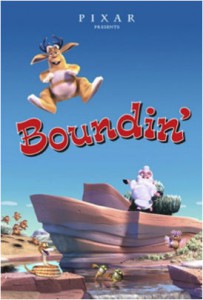 2. Boundin’ – A great little movie by Pixar for little kids who have been traumatised.
2. Boundin’ – A great little movie by Pixar for little kids who have been traumatised.
 3. From fear to wariness. In NZ, some schools have dog rangers come into the schools and teach kids what to do, should they ever find themselves in a situation with a scary dog. These kids will readily tell you, they need to be “as still as a tree”. This learning can be generalized to other scary situations when appropriate. One way I have found is to show some kids videos of people, including children, covered in bees. I also tell the story of a friend of mine, also a psychologist, who grew up in a village in Northern India. When he was quite young, about 7 he thinks, he learnt to be “a honey thief”. He was taught by an older boy how to quietly approach a wild bee hive, and put his hand in and extract a comb of honey, which he shared with the other kids. He says he got stung a few times when he was first learning, but once he got the hang of it, he got very few further stings. You might be interested to know he now teaches ‘mindfulness’ to others.
3. From fear to wariness. In NZ, some schools have dog rangers come into the schools and teach kids what to do, should they ever find themselves in a situation with a scary dog. These kids will readily tell you, they need to be “as still as a tree”. This learning can be generalized to other scary situations when appropriate. One way I have found is to show some kids videos of people, including children, covered in bees. I also tell the story of a friend of mine, also a psychologist, who grew up in a village in Northern India. When he was quite young, about 7 he thinks, he learnt to be “a honey thief”. He was taught by an older boy how to quietly approach a wild bee hive, and put his hand in and extract a comb of honey, which he shared with the other kids. He says he got stung a few times when he was first learning, but once he got the hang of it, he got very few further stings. You might be interested to know he now teaches ‘mindfulness’ to others.
4. Here’s a story I first encountered in one of Irvin Yalom’s books. I later tried to find the source for this story, and found versions of it in cultures all around the world; so god knows who told it first. I have told it many times in therapy, especially family therapy.
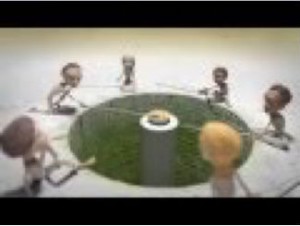 A Rabbi was visited by an angel who offered to show him into heaven and hell. The angel took the Rabbi to a room where emaciated people were seated around a large round table. In the middle of the table was a large bowl of sweat smelling stew. The people had a spoon with a very long handle tied to one of their hands; which could reach into the bowl and take a spoonful of stew. But the handle was so long it went way past their mouth when they tried to feed themselves. There was stew spilled everywhere as they tried dropping the food from a great height, but very little made their mouth. They people were starving and tormented. The angel then took the Rabbi into another room, with exactly the same scene; but here all the people were happy and jovial. The difference – they couldn’t feed themselves, but they could feed each other.
A Rabbi was visited by an angel who offered to show him into heaven and hell. The angel took the Rabbi to a room where emaciated people were seated around a large round table. In the middle of the table was a large bowl of sweat smelling stew. The people had a spoon with a very long handle tied to one of their hands; which could reach into the bowl and take a spoonful of stew. But the handle was so long it went way past their mouth when they tried to feed themselves. There was stew spilled everywhere as they tried dropping the food from a great height, but very little made their mouth. They people were starving and tormented. The angel then took the Rabbi into another room, with exactly the same scene; but here all the people were happy and jovial. The difference – they couldn’t feed themselves, but they could feed each other.
Parents often make great sacrifices for their children, but many are slow to cultivate an ethic of care in their children. By encouraging or allowing their children to care for them, and children certainly want to when they are allowed to see the parents suffering (not told, see); many later adolescent conflicts are avoided.
This story fits well with Emmanuel Levinas’ ‘ethics first’ philosophy. Basically this is the idea that human nature has a reflex to respond to Other, especially the suffering of other. Levinas leads us to see that our first response to Other is always an ethical one; and thinking doesn’t start until a 2nd ethical call comes on us – the phone and the doorbell ring at the same time.
 5. A bit more Levinas. ‘You are walking home from school. You are on your own. You are in a bit of a hurry because you need to go to the toilet urgently – indeed you are walking funny. You come around the corner, and there lying in the middle of the road is a 3 year old. She has fallen off her tricycle and has a bloody knee. There is no one else about. What do you do? …” (…Where did you learn that? How did you know?…etc.)
5. A bit more Levinas. ‘You are walking home from school. You are on your own. You are in a bit of a hurry because you need to go to the toilet urgently – indeed you are walking funny. You come around the corner, and there lying in the middle of the road is a 3 year old. She has fallen off her tricycle and has a bloody knee. There is no one else about. What do you do? …” (…Where did you learn that? How did you know?…etc.)
Its good to get hold of one of these from a child who has tamed one, and get it framed for your office wall. If you are engaging in an externalising conversation (narrative therapy) with a client, it can serve as an excellent example.
Mine has faded now (after 20+ years) and I regret not spending more at the time to preserve it better.
 9. Certificate of Membership to the Monster Taming and Ghost Busters Club.
9. Certificate of Membership to the Monster Taming and Ghost Busters Club.
Thanks David Epston for this – clicking on the image will bring up a WORD version of this document to be awarded to children who tame their monsters or bust their ghosts. Feel free to re-author it as you see fit, including of course changing my name for yours. I laminate the certificates.
I keep a couple of copies of this DVD movie in my office to give to families where a psychosis has made an appearance. They can usually be cheaply purchased from a large red shop in NZ.
The film shows what happens when friends and family (indeed the whole town) accept Lars’ delusion, and maintain an Open Dialogue with Lars. Eventually the psychosis dissolves itself, as many have found who have treated psychosis psychologically with minimal or no psychotropic medication.
Please feel free to send me resources that you have found useful in therapy, and I will trial them and place them here.

